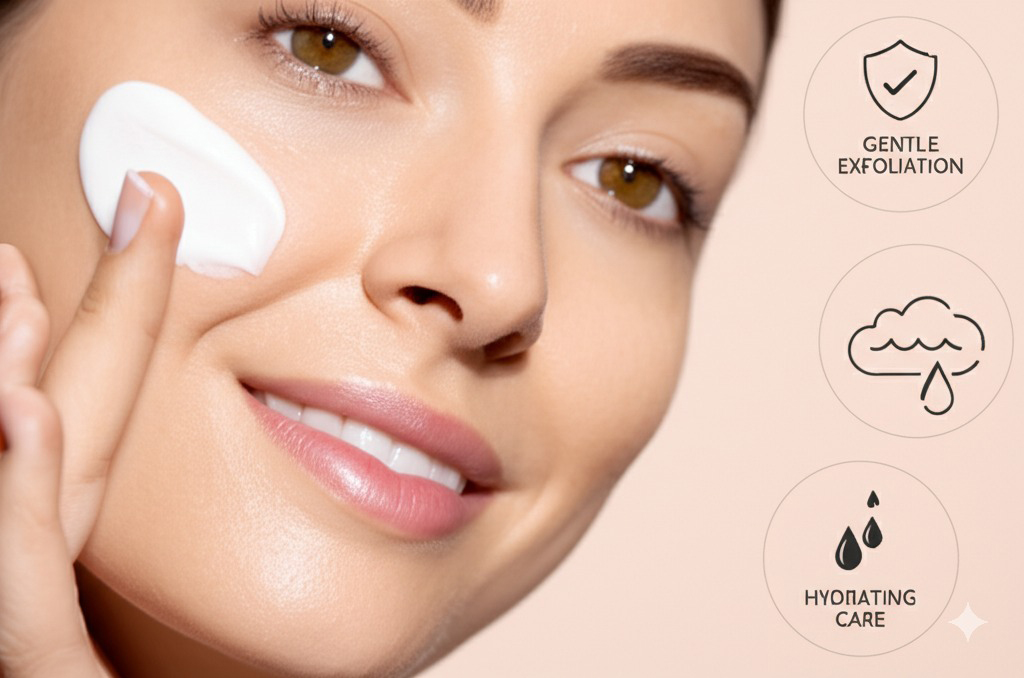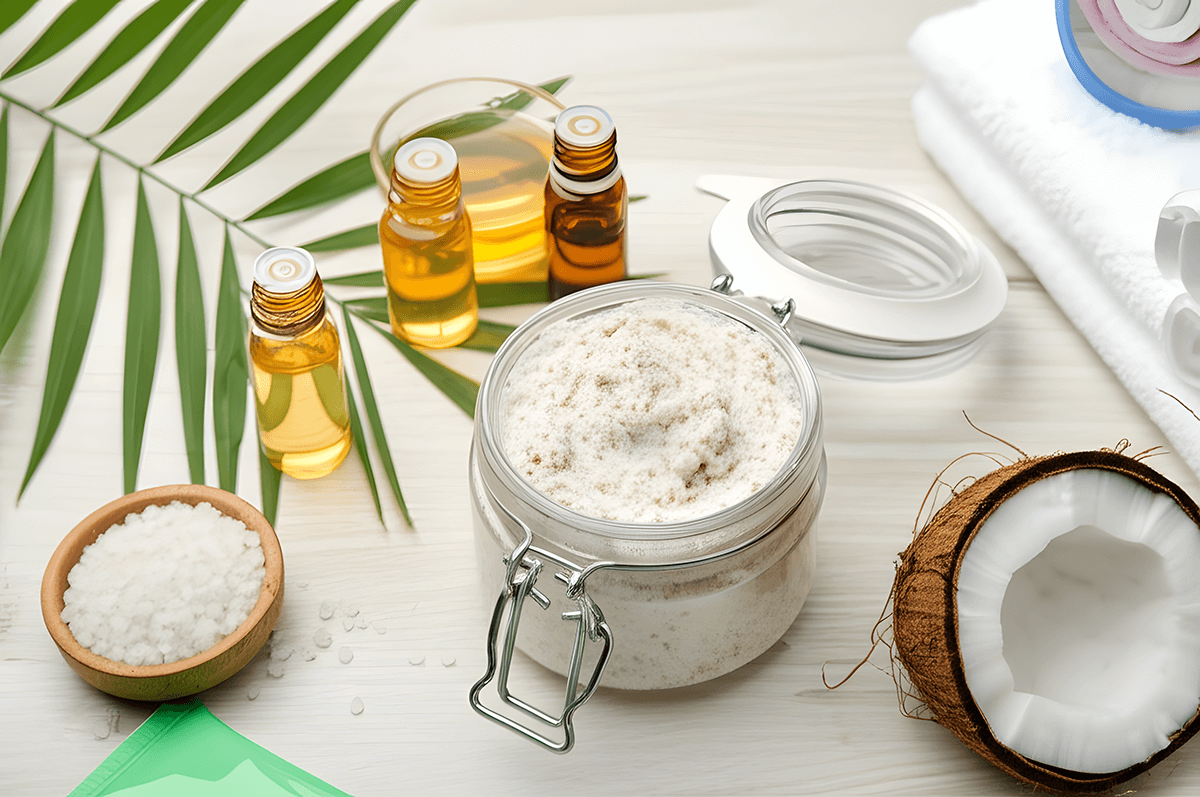In recent years, acids have become some of the most beloved ingredients in the skincare world. From promoting cell turnover to targeting acne and improving skin texture, different types of acids—such as AHAs, BHAs, and PHAs—offer an array of benefits for various skin types. However, with so many options available, choosing the right acid for your skin can be tricky, especially since each acid has its own distinct properties.
If you’ve ever been confused about the differences between AHAs, BHAs, and PHAs, or how to incorporate them into your skincare routine without damaging your skin barrier, this guide is for you. We’ll break down each type of acid, explore the benefits of each for different skin types, and provide tips on how to use them safely and effectively to achieve glowing, healthy skin.
What Are Acids in Skincare?
Acids in skincare generally refer to exfoliants, which work by breaking down the bonds between dead skin cells on the surface of your skin, promoting the shedding of these cells to reveal fresher, smoother skin underneath. While exfoliating is a natural process that happens as skin renews itself, using acids can accelerate this process and yield faster, more visible results.
There are three primary types of acids used in skincare:
- AHAs (Alpha Hydroxy Acids): Water-soluble acids derived from fruits, milk, or other plant-based sources.
- BHAs (Beta Hydroxy Acids): Oil-soluble acids, most commonly salicylic acid, that penetrate deeper into the pores.
- PHAs (Polyhydroxy Acids): Larger molecules than AHAs, these provide a gentler exfoliation and are often recommended for sensitive skin types.
Each of these acids can target specific skin concerns, from acne to dry skin, and they are essential in the journey toward a healthier, more youthful complexion. However, understanding when and how to use each acid for your specific skin type is essential to avoiding over-exfoliation or damage to your skin barrier.
AHA (Alpha Hydroxy Acids)
What are AHAs?
Alpha Hydroxy Acids (AHAs) are a group of water-soluble acids that are commonly derived from fruit, milk, and sugar. These acids are primarily used for exfoliating the surface of the skin, breaking down the bonds that hold dead skin cells together. As a result, AHAs help remove the outer layer of dead skin, revealing the fresh skin underneath.
Common AHAs include:
- Glycolic Acid: Derived from sugarcane, glycolic acid is the smallest AHA molecule, making it the most effective in terms of penetration.
- Lactic Acid: Derived from milk, lactic acid is a gentle exfoliant that also hydrates and nourishes the skin.
- Citric Acid: Derived from citrus fruits, citric acid has antioxidant properties and is often used to brighten the skin.
- Malic Acid: Found in apples, malic acid is often used in combination with other AHAs to enhance the exfoliation process.
Benefits of AHAs
- Exfoliate and brighten: AHAs gently slough off dead skin cells, resulting in brighter and smoother skin.
- Improved texture: Regular use of AHAs can help improve skin texture, reducing the appearance of fine lines and acne scars.
- Hydration: Certain AHAs like lactic acid have hydrating properties, which is why they’re often found in moisturizers and serums.
- Stimulate collagen production: Long-term use can help stimulate collagen, making skin appear firmer and reducing the appearance of wrinkles.
How to Use AHAs
AHAs should be applied on clean, dry skin. You can use AHAs in the form of toners, serums, or exfoliating masks. When starting with AHAs, it’s important to introduce them slowly to your routine to avoid irritation. Begin with a lower concentration (5-10%) and increase the strength as your skin gets used to it. You can apply AHA products at night, and always use sunscreen the following morning, as AHAs can make your skin more sensitive to UV rays.
Best for:
- Oily skin: AHAs help remove excess sebum, reducing the risk of clogged pores.
- Dry skin: AHAs can provide hydration while exfoliating, making them ideal for dry and flaky skin.
- Aging skin: AHAs are excellent for stimulating collagen production, which helps to reduce the appearance of fine lines and wrinkles.
BHA (Beta Hydroxy Acids)
What are BHAs?
Beta Hydroxy Acids (BHAs) are oil-soluble acids that are great for exfoliating the inside of pores. Salicylic acid is the most common BHA found in skincare products. BHAs can penetrate deeper into the skin than AHAs due to their oil-soluble nature, making them ideal for people who suffer from clogged pores, blackheads, and acne.
Benefits of BHAs
- Deep pore cleansing: Since BHAs are oil-soluble, they can penetrate deep into pores to help clear out excess sebum, dirt, and dead skin cells.
- Anti-inflammatory: BHAs like salicylic acid have anti-inflammatory properties that can help calm irritated skin.
- Acne treatment: BHAs are especially effective at preventing acne and breakouts, as they target the underlying causes such as excess oil and clogged pores.
- Exfoliate and improve texture: BHAs help to exfoliate the skin, leaving a smoother texture and helping to fade post-acne scars over time.
How to Use BHAs
Like AHAs, BHAs should be applied to clean, dry skin. Start by using a BHA product a couple of times per week and increase the frequency as your skin builds tolerance. BHAs are typically available in cleansers, toners, and serums, but can also be found in spot treatments for targeted acne concerns.
Best for:
- Oily and acne-prone skin: BHAs are perfect for oily skin types, as they help to control excess sebum production and clear out pores.
- Blackheads and clogged pores: BHAs work wonders on blackheads, as they are able to penetrate deeper into the pores to remove impurities.
PHA (Polyhydroxy Acids)
What are PHAs?
Polyhydroxy Acids (PHAs) are a newer class of acids, often referred to as «gentle AHAs.» PHAs have larger molecules than AHAs and BHAs, which means they don’t penetrate as deeply into the skin. As a result, they provide a much gentler exfoliation and are typically recommended for those with sensitive or reactive skin.
Common PHAs include:
- Gluconolactone
- Lactobionic Acid
Benefits of PHAs
- Gentle exfoliation: PHAs provide a slower, more gradual exfoliation, making them ideal for sensitive skin or those new to chemical exfoliation.
- Hydration: Many PHAs have excellent moisturizing properties, helping the skin retain moisture while exfoliating.
- Antioxidant properties: PHAs offer antioxidant protection, which helps to prevent premature aging and environmental damage.
- Improved skin barrier function: Due to their gentle nature, PHAs can help improve the skin barrier, which is crucial for maintaining skin hydration and health.
How to Use PHAs
PHAs can be used similarly to AHAs and BHAs, but due to their gentle nature, they can be used more frequently, even daily, in some cases. They are often found in moisturizers, serums, and toners. As with all exfoliants, it’s essential to apply PHAs to clean, dry skin and follow up with sunscreen during the day.
Best for:
- Sensitive skin: PHAs are perfect for individuals with sensitive or reactive skin, as they provide exfoliation without irritation.
- Dry and dehydrated skin: Since PHAs are more hydrating than other acids, they’re an excellent choice for individuals with dry skin.
How to Choose the Right Acid for Your Skin Type
The key to successfully incorporating acids into your skincare routine is understanding your skin type and needs. Here’s how to select the best acid for your skin:
- Oily Skin
- Best choice: BHAs (Salicylic acid)
- Why: Oily skin tends to have clogged pores, blackheads, and acne. BHAs penetrate deep into pores, clearing excess oil and preventing breakouts.
- Dry Skin
- Best choice: AHAs (Lactic acid, Glycolic acid)
- Why: Dry skin often lacks moisture and can look flaky. AHAs provide gentle exfoliation while also offering hydration and boosting the skin’s natural moisture barrier.
- Aging Skin
- Best choice: AHAs (Glycolic acid, Citric acid)
- Why: AHAs are excellent for stimulating collagen production, which helps to firm the skin, reduce the appearance of wrinkles, and brighten the complexion.
- Sensitive Skin
- Best choice: PHAs (Lactobionic acid, Gluconolactone)
- Why: PHAs offer a milder exfoliation and are much less likely to cause irritation or sensitivity, making them ideal for delicate skin types.
Tips for Using Acids Safely Without Damaging Your Skin Barrier

- Start Slowly
- Introduce acids slowly into your routine, especially if you’re new to exfoliating. Start with one or two times a week, and gradually increase the frequency as your skin builds tolerance.
- Moisturize Well
- Always follow up with a good moisturizer after using acids. Acids can be drying, so replenishing moisture helps to protect your skin’s barrier.
- Always Wear Sunscreen
- Acids, especially AHAs and BHAs, can make your skin more sensitive to the sun. Make sure to apply a broad-spectrum sunscreen with SPF 30 or higher during the day to protect your skin.
- Avoid Mixing Strong Acids
- Be cautious not to over-exfoliate by mixing multiple strong acids in one routine. For example, avoid using an AHA product along with a BHA treatment or a physical exfoliant. Your skin may become irritated, leading to inflammation and a compromised barrier.
Conclusion
Incorporating acids into your skincare routine can bring immense benefits, but it’s essential to choose the right type for your skin. AHAs are excellent for brightening and smoothing, BHAs work wonders for acne-prone and oily skin, and PHAs offer a gentle, hydrating option for sensitive skin. By understanding the differences between these acids and following the right steps to incorporate them, you can achieve smoother, clearer, and more radiant skin.
Remember to start slow, moisturize regularly, and always wear sunscreen to ensure your skin stays healthy and protected. With the right acids in your routine, you can enjoy the many benefits that these powerful ingredients offer without harming your skin barrier.



